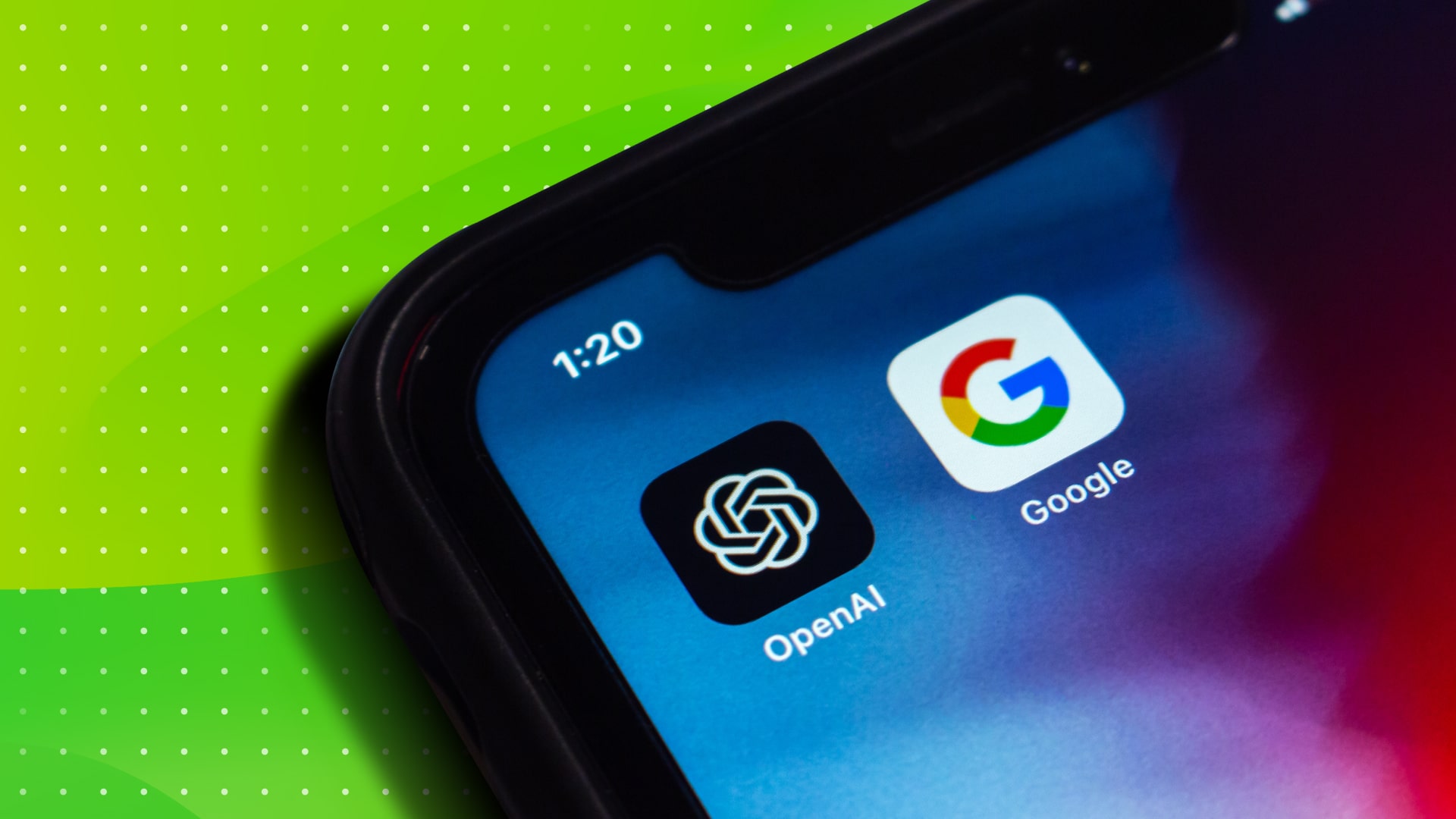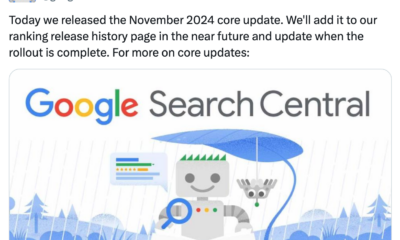MARKETING
10 Ways to Use AI for Better Ads

In our recent post about OpenAI’s ChatGPT, we unpacked what the tool is and how it works, and why we don’t see its popularity as a threat to search engines like Google. In this post, we’ll be diving further into the OpenAI Playground, and how PPC marketers can use that tool along with ChatGPT to save time on research, ideation, execution, and more.
The Playground is a basic UI built on top of OpenAI’s API. OpenAI has recently added ChatGPT to their API. When accessing ChatGPT through this UI, users have the ability to customize the model being used for each query (or continuation of the “conversation”) as they progress through their work.
How to Write ChatGPT Prompts
When working with tools like ChatGPT, it’s important to be as clear as possible in what you ask, and how you ask it. As you write prompts for ChatGPT to work with in retrieving and displaying the information you need, remember that you are giving instructions in a more direct way than you might if conversing with a colleague.
While another person may have contextual insight into what you’re really looking for with your question, tools like ChatGPT take language more literally, tailoring their response to the information you explicitly provide in your request.
ChatGPT will consider every element of your ask, so don’t give generic prompts. The more information you provide the tool in your prompt, the better it will be able to generate what you’re looking for in its response.
Example: Let’s assume you’re using ChatGPT for dinner inspiration…
- Generic prompt (least likely to return what you’re looking for): Give me 10 recipe ideas for a home-cooked dinner
- Slightly better prompt: Give me 10 recipe ideas for a home-cooked dinner with squash as the primary ingredient
- Even better prompt: Give me 10 recipe ideas for a vegetarian home-cooked dinner that I can make in an air fryer in 20 minutes or less with squash as the primary ingredient
See here and the examples below for more information and inspiration on crafting strong prompts.
How to Start Using the OpenAI Playground for PPC Marketing
To get started with the OpenAI Playground, create an account using your personal email address at https://platform.openai.com/. Once you’re logged in, navigate to the Playground page to access the interface and begin making requests.
The right-hand sidebar provides some options for different modes and GPT submodels, as well as Codex models, which are primarily used for generating code. The Complete mode is selected by default, along with the text-davinci-003 model. The other models within the “Complete” mode are typically faster and cheaper but are also less advanced, so they may be viable alternatives depending on the nature of your needs. ChatGPT can be accessed via the Chat mode and is what we used for the examples below.
OpenAI Playground Tokens and Settings
The billing model for using this service is constructed around the concept of tokens. Each new user gets $18 of free credit (900K tokens) that can be used during their first 3 months from sign up; after that, it’s $0.02 for every 1,000 tokens.
There is a token counter in the footer of the Playground display which can help you keep track of how many tokens you are using. 1 token is approximately 4 characters (or 0.75 words), with token usage measured against both your prompts and the responses.
You can limit the number of tokens that can be used in a response by toggling the Maximum length slider on the right hand sidebar, which is set to a 256-token cap by default. If you make an inquiry that requires an elaborate response, you may see the response get cut off before completion; in this case, it may be helpful to increase the Maximum length.
There is a maximum of 4,000 tokens that can be used in a single “request” (single session), i.e. a series of questions within the same Playground. Once you’ve hit that limit, all you need to do is delete your earlier prompt questions and answers, or save them as a “preset” before moving on to a new prompt.
Note: The use of tokens is required in the OpenAI Playground, but not when using ChatGPT natively. As of the time of this writing, ChatGPT is still free to use. A paid version of ChatGPT with advanced features and benefits is also available—ChatGPT Plus.
OpenAI Playground and ChatGPT Temperature
The Temperature setting controls randomness; lowering the temperature results in less random completions. As the temperature approaches zero, the model will become deterministic and repetitive. For most PPC purposes, we recommend a temperature range of 0.6-0.8 as optimal.
10 Ways PPC Marketers Can Use GPT to Improve Workflow Efficiency
“In terms of use cases, there are many different ways in which people working in all industries, and all fields of expertise, can lean on tools like ChatGPT and the OpenAI API to improve their efficiency and automate certain redundant tasks. This technology can help with smaller, repetitive tasks, such as breaking down a long document into a bullet point summary. However, when it comes to critical thinking and understanding the implications of things, I would be very cautious about over-relying on AI.”
— Josh O’Donnell, Sr. Strategist, Paid Search at Tinuiti
A couple of important things to consider before diving into our examples below:
- ChatGPT/GPT language models training data cuts off in 2021. They do not have any knowledge of current events, and cannot accurately respond to questions about such topics. ChatGPT is not aware of things like who won the big game last night; it is not even aware of what day it is.
- ChatGPT/GPT language models do not have access to the internet or any other kind of external data retrieval; they can only answer questions based on the knowledge acquired from their training data. They cannot verify facts or provide references, only generate responses based on their own internal knowledge and logic.
1. Keyword Research
Whether you work on the Paid Search side of marketing, or the organic side, you know how important (and time-consuming) thorough keyword research can be. One of the most important rules of marketing is to know your audience—which includes knowing what they want, and how they search for it—and the OpenAI Playground can help you find those answers faster.
Sample Scenario:
You’re just getting started building a new PPC campaign for a client that sells running shoes. To kick off your initial keyword research, you want to get an idea of which related keywords are being searched most often. You want a Top 20 keyword list, and GPT can generate a list for you to help you get started.
The prompt: Provide me with a list of 20 running shoe keywords for google ads, list them in descending order based on expected search volume in the United States.
The result:
Note that since OpenAI enables you to continue the “conversation” beyond your first query, we also asked it where it got the returned information from (above photo); it’s always important to consider the source when relying on AI-generated responses. This is a good example of why it’s important to take the outputs with a grain of salt, using them as inspiration to get you started, but not the finished product.
2. Competitor Research
Comprehensive competitor research and analysis is a crucial part of a marketer’s job, helping inform and guide their campaigns. However, just like keyword research, this is also an ongoing, time-consuming process.
When you work in a complex space—or your products or services are part of different spaces—it can sometimes feel overwhelming to assure you’re accounting for everything and everyone. The OpenAI Playground can help make short work of initial research in a variety of ways.
Below, we showcase the results provided by three different prompts aimed at unpacking competitor insights instantly…
Sample One: Ask for a list of top US competitors ranked largest to smallest with accompanying website URLs to get ideas for custom audiences, messaging, and product positioning.
Sample Two: Ask objective questions about your competitor and their product.
Sample Three: Ask about pain points for competitor products, and use that info to inform your own product messaging & marketing strategies.
3. Generate Ad Copy
In the below examples, we used the URL of the ad’s landing page to help inform the suggestions from ChatGPT, providing character limits in our prompt to help direct the output. If your original result doesn’t meet your expectations, continue to sculpt with additional follow-up prompts. GPT cannot access these web pages in real-time, but it can use the context from the URL structure to inform the output.
“It’s more of a utilitarian thing, where you provide the tool with the data, and ask it to manipulate that data for a better output. One example is to provide it with a web page, and ask it to generate some ad copy based on the URL text; it can provide fifteen or twenty options within seconds. I would never recommend simply taking those headlines and pasting them into an ad, but you can now start off your project with a list that you or a teammate can garner inspiration from, and strategically refine or tweak to fully optimize. This gives the practitioner more time to spend on critical thinking, with ChatGPT taking away the more mundane elements of the task.”
— Josh O’Donnell, Sr. Strategist, Paid Search at Tinuiti
The copy itself should be quality, but the important aspect of parity between what you’re saying on the ad and what’s on the page can be efficiently solved for.
4. Translations of Copy & Headlines
In the example below, we asked ChatGPT to translate the 5 English language ad copy options generated above into Spanish. Additional options currently available include French and Japanese translations.
5. Answer Questions on Demand
Similar to ChatGPT, the OpenAI Playground can also be used for Q&A purposes. Just remember that answers can only be generated based on the tool’s current knowledge.
Source: https://platform.openai.com/examples/default-qa
This can be especially helpful during calls with clients when you need a fast and simple answer to keep the conversation moving forward.
6. Simplify Complex Concepts
When talking about digital marketing with other practitioners, we know our audience ‘speaks the same language’ and certain questions, concepts, or outcomes need no further explanation. However, those same complexities aren’t always as easy to communicate to newer team members or clients.
Even when our day-to-day contacts are digital savvy, they often have to convey information to those higher up the chain in their organization who might not be as familiar with the lingo, or even why certain things they’re highlighting matter.
For scenarios like these, OpenAI’s Summarize for a 2nd grader feature can prove especially helpful. Once you have the foundation laid out, you can add more color and context to paint the fuller picture without worrying the basics would be glazed over.
7. Generate Product Descriptions & Names
Working with accurate, well-optimized product names and descriptions is one of the most essential elements of effective marketing. Strong, descriptive names and product information help search engines and users alike in uncovering the items that will be most relevant to their needs.
Source: https://platform.openai.com/examples/default-product-name-gen
While names and descriptions will always require a human touch for proper refinement, tools like ChatGPT and the OpenAI Playground can provide a great starting point to build from.
8. Parse Unstructured Data
The OpenAI Playground makes it easy to organize long-form text into a table format. Simply specify a desired structure, provide a few examples to work from, and enjoy the time saved.
Source: https://platform.openai.com/examples/default-parse-data
Source: https://platform.openai.com/examples/default-parse-data
9. Call Summaries & Follow-Ups
Call summaries are an important aspect of keeping organized and ensuring everyone working on a project is clued into plans and discussions, even if they weren’t part of the original calls. Putting together these comprehensive, valuable recaps can sometimes take as much time as the call itself, but GPT can help.
Below, we asked GPT to write a follow-up email based on a call summary.
10. Convert text from first-person to third-person
We have found this feature especially helpful for turning our own notes into actionable steps someone can follow when shared. For example, if you want to share steps for completing a process with a team member or client, you can type naturally using “I” language to convey those directions. You can then quickly convert the text to third-person, adjusting as necessary for optimal clarity.
Source: https://platform.openai.com/examples/default-third-person
Conclusion
The capabilities of advanced tools like OpenAI’s Playground and ChatGPT can make short work of mundane tasks, help quickly generate ideas and direction, and ultimately save us all time to focus on the elements of marketing and advertising where our expertise and strategic insights can truly shine. If you’re interested in more under-the-hood information about how ChatGPT works, check out Stephen Wolfram’s breakdown of ChatGPT. Also see here for additional application options, or reach out today to learn more about how our Paid Search team can bring your PPC advertising results to the next level!










